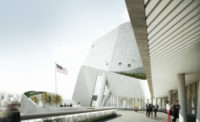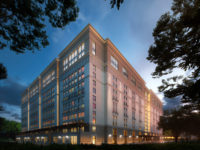Community Forum Questions Crop of Tall Buildings Around Central Park

“Central Park was conceived as a democratic experiment,” said Warren St. John, a journalist who last fall began calling attention to the shadows created by a group of exceptionally tall buildings now rising just south of the park. St. John, speaking at the New York Public Library, during a community forum on February 19, said the towers will contain condos for the superrich, whose views will come at the cost of sunlight on lawns and playgrounds enjoyed by millions of New Yorkers.
The discussion, attended by nearly 500 people, was an indication of widespread concern about the effects on Central Park of what Margaret Newman, the new executive director of the Municipal Art Society, called “the accidental skyline” But the discussion was also an indication of the difficulty of doing anything to stop the buildings, which are being constructed as-of-right (that is, without the need for zoning variances). Gary Barnett, the developer of the 1,000-foot-tall One57, designed by Christian de Portzamparc, said his building is already less than half as wide as zoning laws would have permitted. At the same time, he said, the towers will provide thousands of jobs, a benefit that, in his view, outweighs the cost of shadows that, he said, would pass across the park in minutes.
The remaining panelists were divided on how to address, or even frame, the problem. Peg Breen, president of the New York Landmarks Conservancy, focused on the loss of several townhouse-sized buildings on 57th street that give a “sense of history, a sense of place.” Michael Kwartler, director of the non-profit Environmental Simulation Center, suggested that the problem extends beyond Central Park. “We need to take a look at all the parks in all the boroughs,” he said.
But St. John said that a discussion of “all the parks” will take years and called for the City Council to place an immediate moratorium on buildings that cast shadows on Central Park. “The way to do that,” he said, “is not to get involved in a long discussion about every park in the city. If we sit around and debate that while the buildings go up, the conversation will be moot.” Dan Garodnick, the Council member who represents the neighborhood south of the park, is looking into how the zoning that permitted the current crop of buildings might be changed, according to a spokesman.


